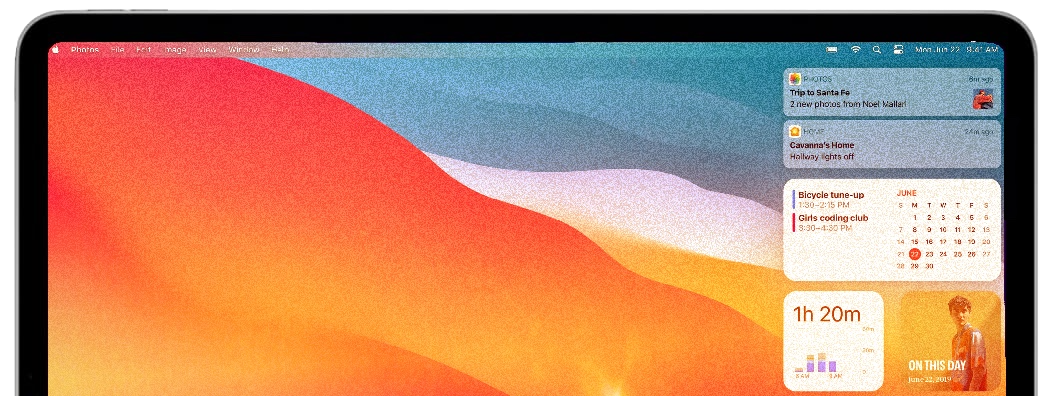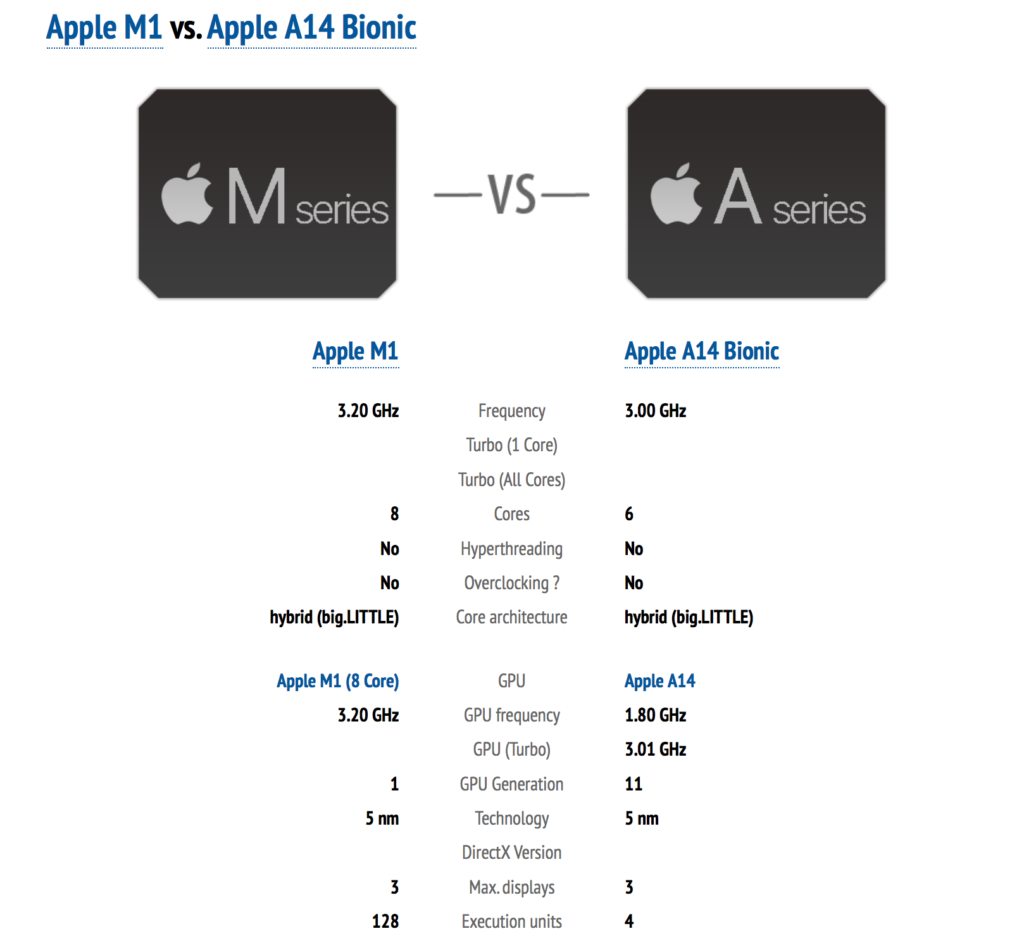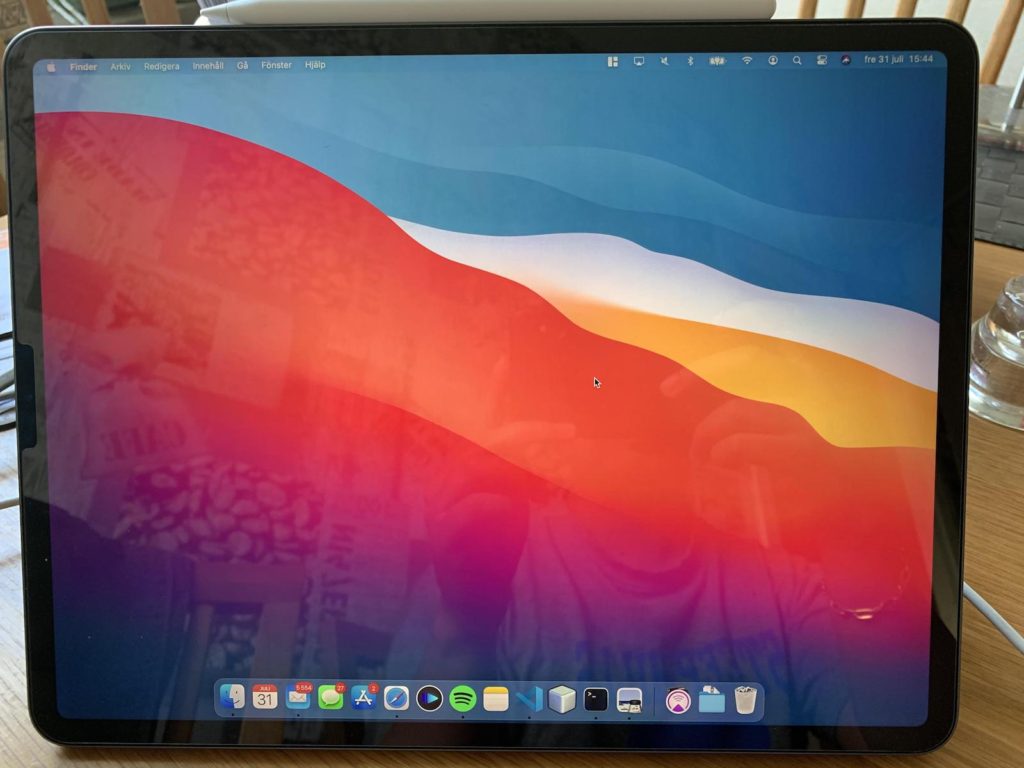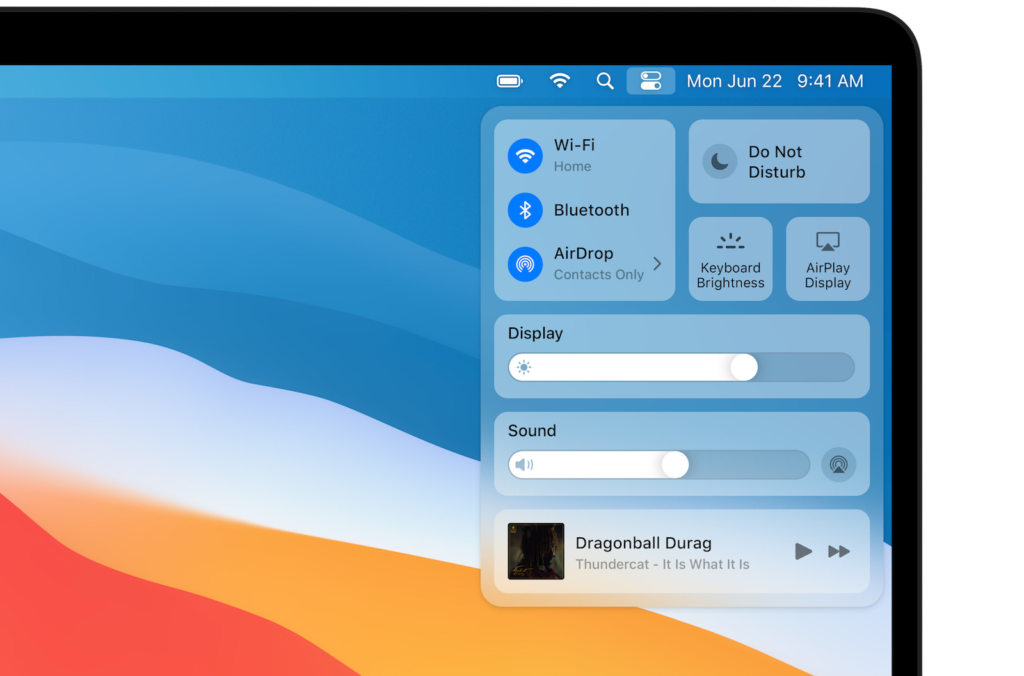(Part 1 – the iPad is a fantastic device let down by iPad OS)
Which brings me back to the M1, which is the same machine architecture, ARM64, as the A series of chips that power the iPad and iPhone.
If Big Sur can run on the M1, can it run on the A14 “Bionic” chip?
In other words, could it be possible have the iPad run Mac OS Big Sur?
Architecturally, it should be possible. Practically? Maybe. While I’m not a computer architecture professional, the A14 Bionic compares quite well with the M1.
There are some big differences, such as the L2 cache and the GPU “execution cores”. Also, the A14 was designed for iOS, which is a lot more restrictive with resource management than Mac OS, a desktop OS where user applications can run indefinitely in the background. Could the A14 support this more freewheeling approach to process execution without killing battery life? Or will Apple need Mac OS’ resource management algorithm to adapt depending on whether it runs on an A-series or M-series chip?
On the other hand, there are similarities beyond just both being ARM64 machines. Big Sur expects certain security capabilities of the M1 chip: “… the latest generation Secure Enclave, a high-performance storage controller with AES encryption hardware, and hardware‑verified secure boot.” These capabilities used to be provided by the T2 chip, which was present on most (all?) Macs from 2018 onwards, has now been moved into M1. But the iPad Pro 2020 has this T2 chip, which Apple says is used for “hardware microphone disconnect“, but potentially has the same capabilities as one in a Mac.
If you think of the iPad Pro as a Mac optimised for even greater portability than the MacBook Air, sacrificing some of the supposedly unbelievable performance for flexibility, it begins to make more sense. It could be the Macbook with 4G that people have wanted for years.
The iPad hardware ecosystem, even Apple’s own product,s already has a wide range of pointer and keyboard accessories. Apple’s Magic Keyboard for the iPad has multitouch support. One could interact with Mac OS using iPad accessories quite easily.
Then there’s touch. Mac OS Big Sur is a lot more touch-friendly than previous versions – some changes like the new Control Centre seem more from the touch-first world than a trackpad-first one. The Apple senior VP Craig Federighi recently denied designing Mac OS for touch, and that might well be true – it’s just elementary interactions with the OS like changing settings and dragging windows – may work well with touch.
And finally, Mac OS Big Sur can run iOS/iPadOS applications without them needing to be modified, since they’re built for the same machine architecture. So Mac OS could still run Netflix, Amazon Video, Hulu and other iPad-optimised entertainment iOS apps without issue, instead of running them in the browser as today. Those apps were built for touch, and will respond to touch just as well as if they ran on iPadOS.
So there you have it. The iPad Pros are gorgeous, powerful machines. And have been for a while. But iPadOS is still quite limiting for a variety of work, despite a ton of progress in the last three years.
If Macs and iPads now run on chips of the same system architecture, that opens the possibility of the iPad being able to take advantage of Mac OS’ capabilities. Mac OS Big Sur can run iPad apps natively. That makes it technically possible – though not straightforward – for Apple to make Mac OS itself run on the iPad, truly creating an entirely new type of portable, flexible, capable computer.
(ends)




